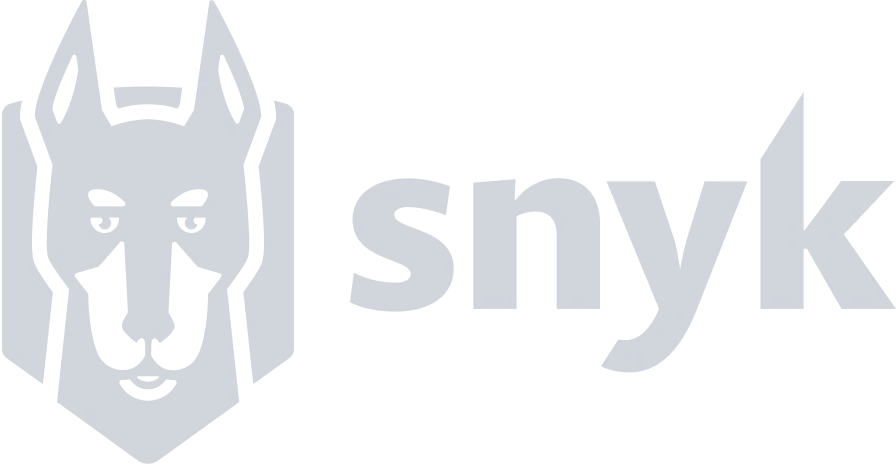
BIRTHDAY at checkout.🎁
Hi! I'm Ruurtjan Pul, a full-stack developer who used to suck at DNS.
I've had many side projects over the years, and never completely understood why my DNS records didn't update. Or how long to wait until they do. Worse yet, I've had my emails bounce because I misconfigured SPF, DKIM and DMARC.
I decided to learn DNS by making Nslookup.io, a web interface for DNS. I've read the RFCs to implement a custom DNS client and I now run my own DNS server. Nslookup has become popular enough to replace my income, so I'm working on it full-time since early 2022.
Now that I've spent so much time learning DNS, I'm sharing everything I've learned in this comprehensive video course. It will teach you to reason about DNS from first principles and guard you against the mistakes I made. When you finish this course, you will be able to manage and debug DNS with confidence.
Learn DNS once and for all.
They say you should learn the fundamentals, and the rest will fall into place. DNS is right at the foundation of the internet. Having a clear understanding of DNS will help you configure and debug DNS many times throughout your career.
DNS hasn't changed that much since its introduction in 1983 and it's unlikely to start now. DNS isn't going anywhere. The earlier you learn DNS, the longer you'll benefit.
The great thing about DNS is that all the information is public. You can have perfect clarity if you know where to look.
DNS from first principles
Build a foundational understanding of the core concepts of DNS. We'll start from scratch and build up to a complete picture of the essence of DNS.
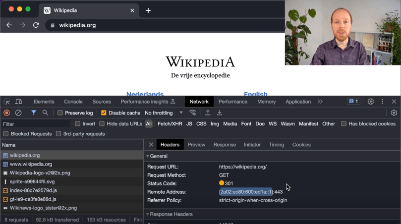
Dns is a database
Get familiar with the design goals of the domain name system and its main functions.
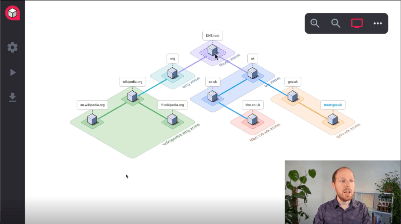
The DNS is organized as a tree
Learn how domain names and DNS records are organized in a tree-like structure.

Zone delegation
Understand what DNS zones are and how DNS records are used to delegate authority over a zone.
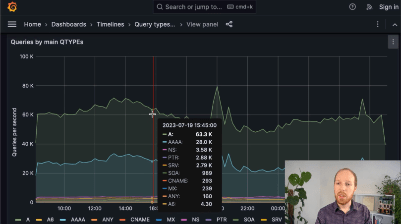
The root zone
Discover what the DNS root zone is, how it is used to bootstrap the DNS and how it works internally.

Authoritative DNS servers
Learn how autoritative DNS servers serve DNS records, and how zone transfer works.
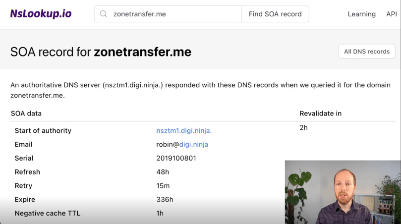
Zone transfer
Learn how zone transfer works and how it is used to synchronize DNS records between DNS servers.
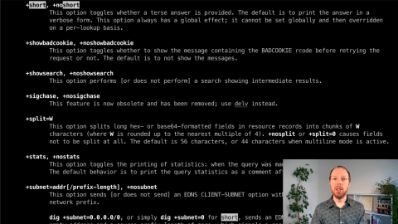
Dig and Nslookup
Learn how to use the Dig command line tool to query DNS records, and troubleshoot DNS issues.
Domain names
There's a lot more to domain names than you'd think. In this module, you'll learn which parties are involved in managing domain names, the lifecycle of domain names, and how to look up information about their owners.
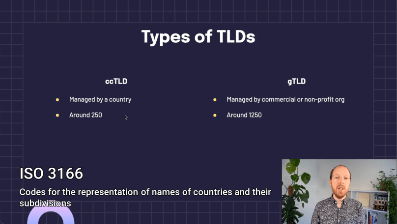
Top-level domains
Learn about TLDs, ccTLDs, and gTLDs, and how they are used to organize the domain name system.
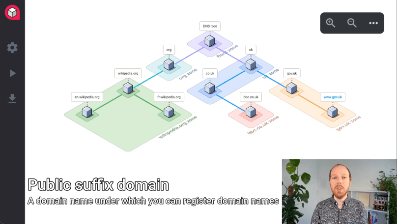
Second and third-level domains
Learn about the domain name registration process.
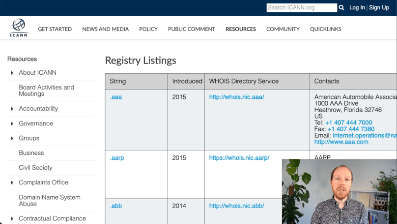
Registries, registrars and registrants
Get familiar with these three entities, their roles and their responsibilities in the domain name system.
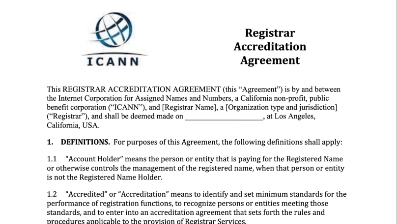
ICANN's oversight
Understand the purpose of ICANN and how it regulates the domain name system.
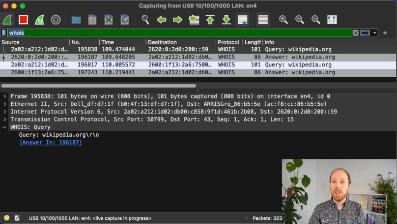
WHOIS and RDAP
Learn how to look up information about domain names and their owners.
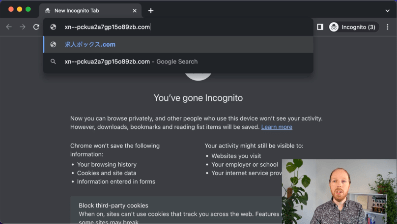
International domain names
Understand how domain names are encoded and how to register domain names with non-ASCII characters.
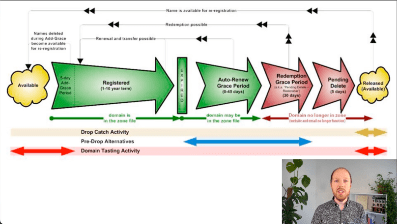
The domain name lifecycle
Learn about the different stages of a domain name's lifecycle, from registration to deletion.
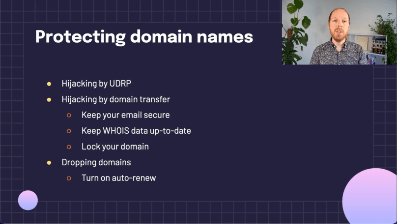
Domain transfer
Learn how domain name transfers work and how to protect against domain name hijacking.
All content, no fluff
I get it. You're not here to hear my life's story. That's why this course is to the point. No fluffy introductions. No history lessons. Only exactly what you need to know to be the DNS guru your colleagues will love.
Operational DNS
Learn how DNS works in practice, from the root zone to the recursive resolver. You'll get to understand the run-time behaviour of DNS clients and servers.
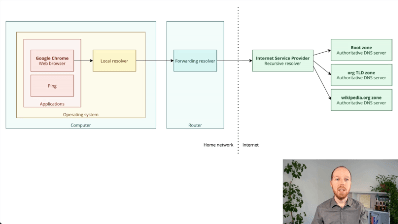
Recursive queries
Follow the life of a DNS query from the browser, through the recursive resolver, to the authoritative nameservers and back.
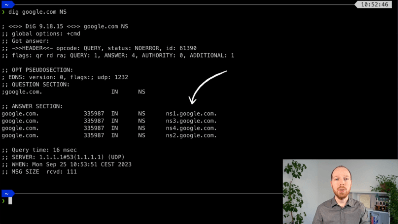
Glue records
Find out how glue records are used to break circular dependencies in the DNS and how they are managed.
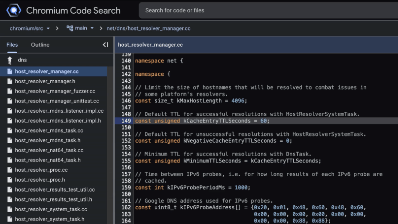
DNS caching
Understand how DNS caching works and what trade-offs you need to consider when setting your DNS records' TTLs.
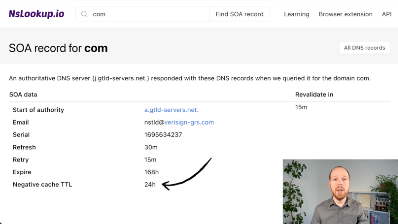
Negative caching
Learn how negative caching works and how it protects DNS servers from being overloaded.
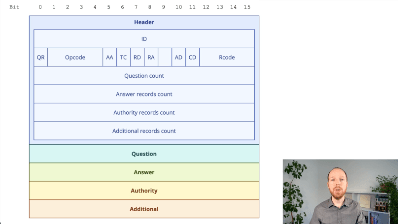
The DNS protocol
Learn how surprisingly simple the DNS protocol is and what every field of a DNS message is used for.
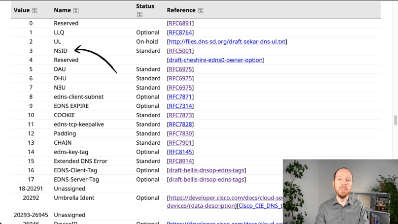
EDNS
Understand how EDNS extends the DNS protocol and how it is used to support DNSSEC and other DNS extensions.
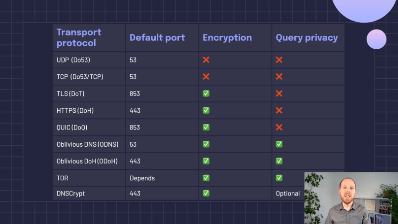
Transport protocols
Understand why DNS uses both UDP and TCP and other transport protocols like (oblivious) DoH, DoT, DoQ and DNSCrypt.
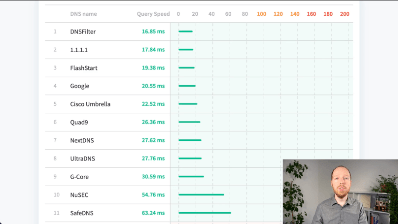
Public DNS resolvers
Learn how public DNS resolvers work internally, and how they achieve high performance and high availability.
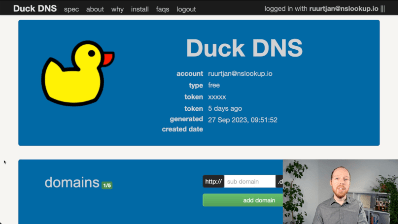
DDNS
Learn about the two ways DDNS allows you can automatically update DNS records.
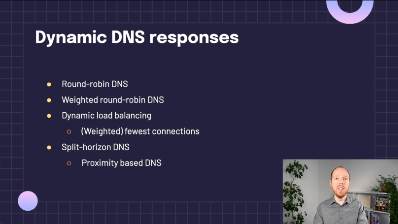
Dynamic DNS responses
Learn how round-robin DNS, weighted fewest connections, dynamic load balancing, and split-horizon DNS work.
“This course has filled in lots of gaps in my understanding of DNS that I had despite taking multiple networking courses.”
Types of DNS records
The DNS stores much more than just IP addresses. In this module, you'll learn about the most common types of DNS records, how they work and each of their preculiarities.
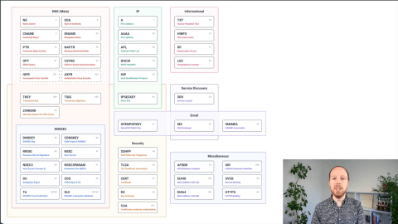
An overview of DNS record types
Get familiar with the different types of DNS records and which ones are most commonly used.
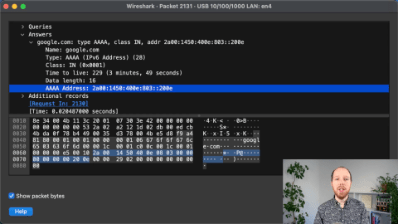
A and AAAA records
Learn how A and AAAA records are used to point domain names to IP addresses.
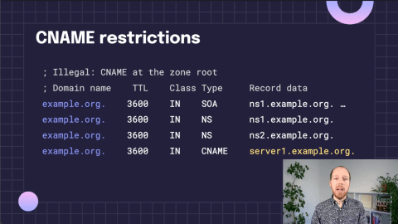
CNAME records
Learn how CNAME records are used to point one domain name to another and what their limitations are.

TXT records
Learn about the different uses of TXT records, including domain verification and email authentication.

SRV records
Understand how SRV records are used to provide information about (micro) services.

PTR records
Learn how reverse DNS works and how PTR records are used to prevent spam and phishing.
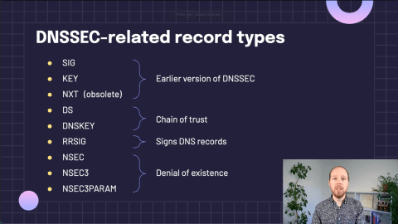
DNSSEC-related records
Learn about the different DNSSEC-related records types and how they are used to secure the DNS.
Money back guarantee
You get everything you need to master DNS. You have 60 days from the time of purchase to review every module in my training. If you decide that this isn't worth your investment, or if you do not feel satisfied, send me an email and I'll send you a prompt refund, no questions asked.
Email and the DNS
The DNS stores all routing information for email. Over the years, DNS has been extended to support email authentication and security as well. You'll learn how to configure these records and debug email delivery issues.
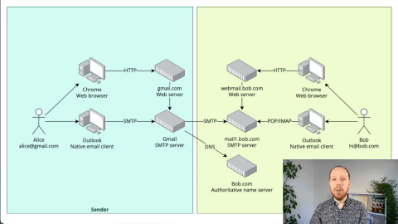
An overview of email configuration
Get a broad overview of how SMTP, MX, MTA-STS, SPF, DKIM, DMARC, and BIMI work together to deliver email.
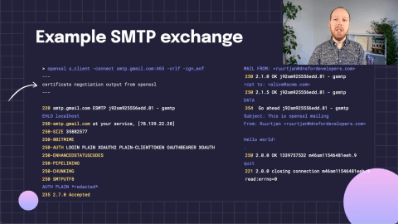
MX records
Learn about MX records, hot standby mail servers, and how nolisting can combat spam.

DANE
Understand how DANE records are used to prevent man-in-the-middle attacks by enforce TLS encryption.
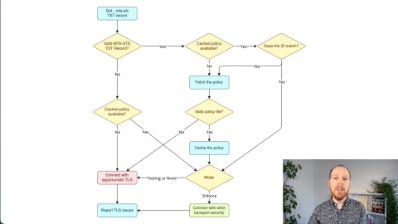
MTA-STS
Learn how MTA-STS records are used to enforce TLS encryption and debug email delivery issues.
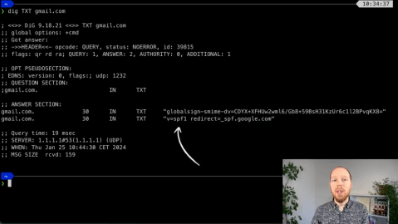
SPF
Understand how SPF records specify which mail servers are allowed to send email on behalf of a domain.
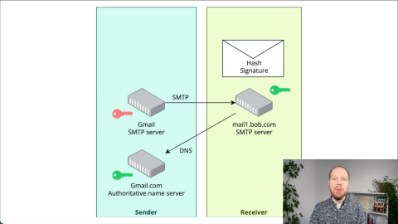
DKIM
Learn how DKIM records are used to sign email messages and how to configure them for multiple mail services.

DMARC
Learn how DMARC records are used to enforce SPF and DKIM policies and debug email delivery issues.
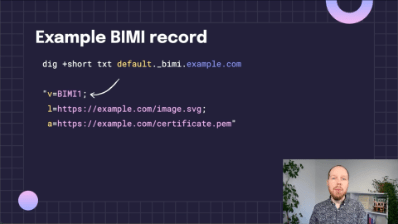
BIMI
Learn how BIMI records are used to specify which logo should be displayed next to an email message.
Debugging DNS issues
Equip yourself with the knowledge to debug DNS issues effectively. You'll learn how to use Dig, Wireshark and other tools to identify and fix common DNS issues.
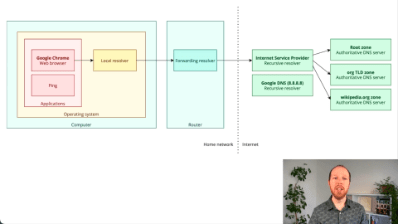
Cache invalidation
Learn how to invalidate DNS caches to speed up propagation for DNS record changes.
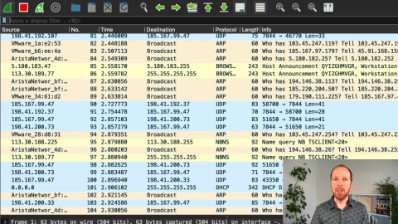
Inspecting DNS traffic
Learn how to use Wireshark to inspect DNS traffic locally and on remote servers.
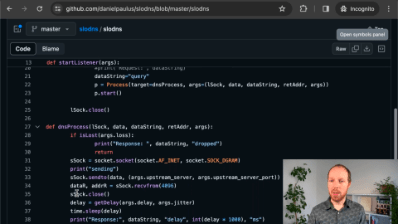
Simulating slow or failing DNS
Learn how to simulate slow or failing DNS responses to replicate DNS issues.

Lame delegation
Understand what lame delegation is, how to detect it, and how to fix it.
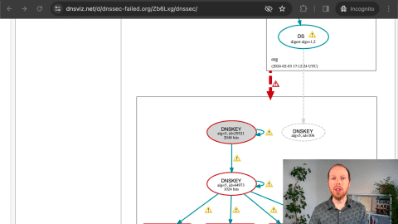
DNSSEC issues
Learn how to prevent DNSSEC issues, and how to debug and fix them when they do happen.
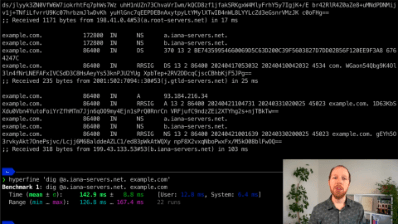
Identifying root causes
Learn how to identify the root cause of DNS issues, and how to fix them.

Graceful DNS changes
Learn how to make DNS changes without downtime and best practices for DNS changes.

Get certified
Boost your career by proving your knowledge with a certificate.
This course comes with an exam and a retake.
Pricing
A one-time investment that will last your career.
BIRTHDAY at checkout.🎁Full access
Get instant and lifetime access to the full course.
What’s included
- 6 modules containing 47 video lessons
- 6 quizes throughout the course
- Glossary for quick reference
- Exam and retake to get certified
- Members-only Discord community
- All future updates and additions
One time payment
Invoice and receipt available for easy company reimbursement
Who is this course for?
This course is for you if you want to gain mastery over DNS.
It assumes you have a basic understanding of how the internet works, but you don't need to be an expert. This course assumes no prior networking experience and involves no programming.
If you've worked on DNS full-time for over a year, this course is probably not for you. Otherwise, you'll learn a lot! If you invest in your knowledge today, you'll benefit for the rest of your career.
Frequently asked questions
Of course! You can generate an invoice with our payment provider after your purchase.
Yes, I occasionally teach private bootcamps and traineeships. I can also give workshops for conferences. Email me at [email protected] to discuss your needs.
I've tailored this course for software developers, but there will be no programming in this course. If you're comfortable working with IT, I'm confident you'll be able to complete the course. It's nothing you can't Google.
Yes, if you live in a lower-income country then email me at [email protected] for a discounted price.
No problem at all! Just email me at [email protected] within 60 days and I'll refund you in full, no questions asked.





